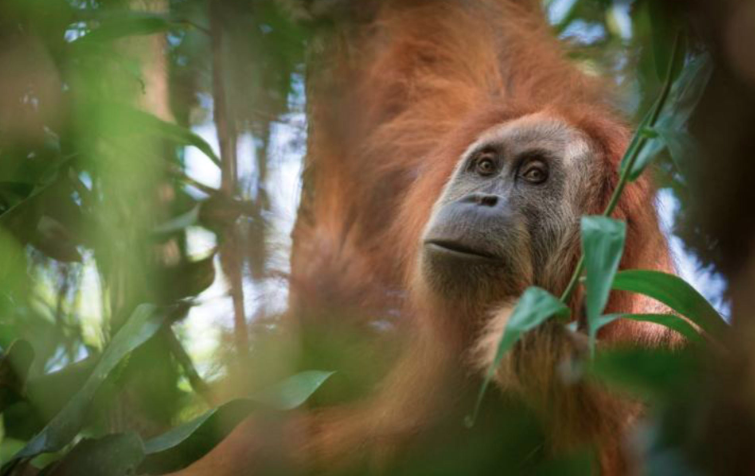An intriguing discovery has emerged, unveiling the existence of a fresh breed of orangutan. Here, you’ll embark on a journey to uncover captivating insights about this latest addition to the remarkable clan of great apes!

New Species Of Orangutan
Exciting news from the scientific community! A remarkable orangutan species, known as the Tapanuli orangutan, has recently been discovered. This newfound species has been officially named Pongo tapanuliensis.
Setting it apart from the other two orangutan species, the Tapanuli orangutan showcases distinct physical characteristics and behaviors. Its notable features include thick and curly hair, a lengthy vocalization, and a unique dietary preference.
With the addition of this newly recognized species, there are now three distinct types of orangutans: the Sumatran Orangutan, the Tapanuli orangutan, and the Bornean Orangutan. Sadly, all three species are classified as critically endangered.
In fact, the Tapanuli orangutan may face the highest level of endangerment among them all. It is estimated that there are fewer than 800 Tapanuli orangutans remaining in the lush rainforests of Sumatra.
This significant identification of the Tapanuli orangutan as a distinct species expands the count of great ape species from seven to eight.
Where Does The New Species Of Orangutan Live?
The Tapanuli orangutan, a remarkable species, calls the Indonesian island of Sumatra its home. Sumatra, ranked as the sixth largest island globally, is situated in the vast expanse of the Indian Ocean.
This captivating orangutan variant thrives amidst the lush rainforests of the Batang Toru Ecosystem, which can be found within the Tapanuli region in North Sumatra.
To visualize the precise location of this ecosystem in relation to the rest of the world, you may explore the interactive map provided. Feel free to navigate, zoom in, and zoom out to observe the Batang Toru Ecosystem’s placement.
Differences Between The Tapanuli Orangutan And Other Orangutans
Upon initial observation, the Tapanuli orangutan may appear similar to other orangutan species in terms of physical appearance. Yet, diligent researchers have managed to uncover numerous distinctions that set the Tapanuli orangutan apart from its counterparts. These notable dissimilarities encompass:
The Tapanuli orangutan possesses thicker and curlier hair, along with a less sturdy skull and jawbone. In males, they showcase a moustache and a prominent beard. Additionally, male Tapanuli orangutans have flatter cheek pads adorned with thin blond hair. When it comes to their diet, these orangutans consume a variety of plants distinct from those favored by other orangutan species.

When Did The New Species Split From The Other Orangutans?
Through sophisticated genetic analysis methods, scientists have made remarkable discoveries regarding the ancestral background of the Tapanuli orangutan.
Remarkably, it has been revealed that the Tapanuli orangutan shares a closer genetic relationship with the Bornean orangutan rather than the Sumatran orangutan. This finding is surprising considering the physical resemblance between the Tapanuli and Sumatran orangutans, as well as their close proximity within a mere 60-mile distance on the island of Sumatra.
Approximately 3 million years ago, the Tapanuli orangutan and Sumatran orangutan diverged into distinct species. Subsequently, around 670,000 years ago, the Tapanuli orangutan and Bornean orangutan followed suit, evolving into separate species.
It is worth noting that although the Bornean orangutan is primarily found on the island of Borneo, both Borneo and Sumatra were once connected as a single landmass known as Sundaland. Over time, as the sea level gradually rose, the islands became separated, leading to the isolation of their respective orangutan populations.
Threats
According to estimates, there are less than 800 Tapanuli orangutans remaining, placing them in the critically endangered category. These unique primates inhabit a remarkably small rainforest area of approximately 1,000 square kilometers (400 square miles).
Unfortunately, this region is currently facing multiple threats, including the construction of roads, unlawful deforestation, and a proposed hydroelectric project. Additionally, the orangutans are under constant peril from hunters.
Without successfully addressing these challenges, the Tapanuli orangutan’s existence may be at risk, with the possibility of extinction looming just a few decades after its initial discovery.